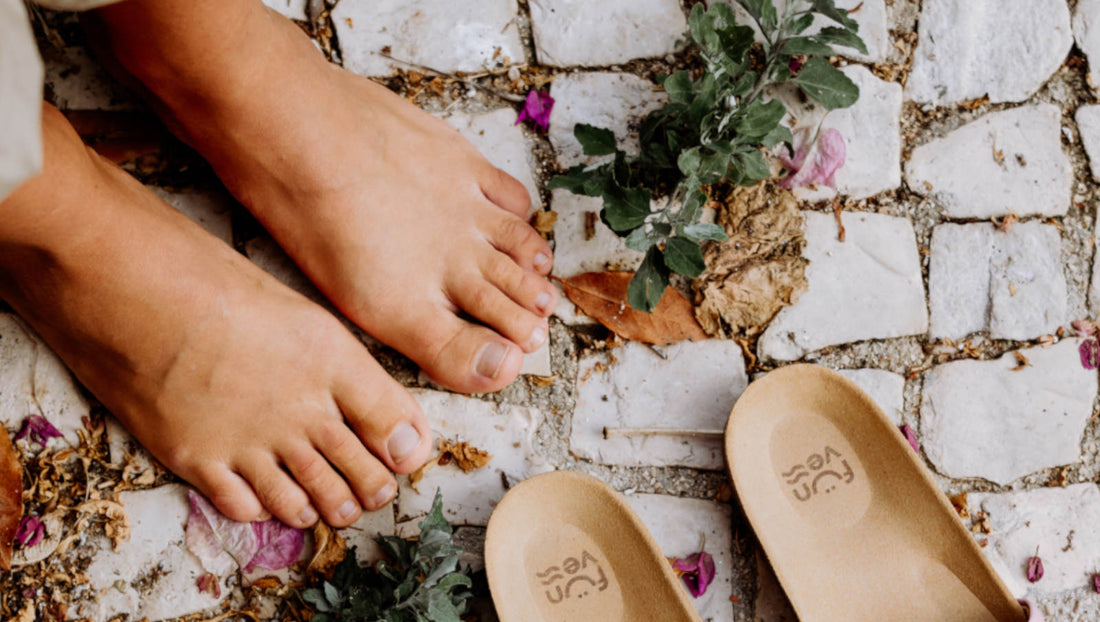Beautiful feet - that sounds like a dream for many of us. But what actually defines beautiful feet? We believe that what really matters is not whether they are perfectly shaped or flawless, but rather that they are healthy and strong.
What do healthy feet look like?
- Toes that are in a natural position and are not twisted or pinched
- Stable and straight heels
- Feet that are of normal thickness and flexibility
- No stress pain
- No numbness and no tingling
- No rashes, inflammation or fungal infections
- No deformities such as hammer toes, claw toes or flat feet
Good care is part of healthy feet
Proper care is also an important factor for healthy feet. Unfortunately, feet are often neglected and don't get the attention they deserve. Here are a few tips on how to properly care for your feet:
-
Choose the right shoes: A shoe should not only look good, but also fit well and be comfortable. Avoid shoes that are too tight or too high and wear anatomic insoles or even orthopedic ones if necessary.
-
Pamper your feet from time to time: Give your feet a break from shoes regularly and go barefoot when possible. You can also get a pedicure or do your own foot care by soaking and peeling them, clipping nails, and removing calluses.
-
Stretch and train your feet: Regular foot exercises and stretches help strengthen and relax the muscles and ligaments in your feet.
-
Stay clean: Always keep your feet clean and dry, especially between your toes, to avoid fungal infections and other problems.
-
Hydrate: Use creams or lotions to hydrate your feet and keep skin supple.
-
Avoid excessive sweating: If you sweat a lot, change your socks regularly - fresh socks once a day is the minimum. Also make sure that the shoes and socks are always well ventilated. Open slippers are perfect for this! ;)
Well-groomed feet are not only important for our physical health, but also for our well-being. With a few simple steps, you can keep your feet fit - and who knows, they might even become your new favorite body part. If that's already the case - or if you are just interested in the topic of foot fetish - read on here: Foot Fetish - what's there to know?
The definition of beautiful feet in other cultures and times
In today's Western culture, symmetrical and well-groomed feet are generally considered attractive, regardless of their size. However, the definition of "beautiful feet" varies by culture and historical period. For example, in some cultures small feet were considered particularly attractive, while in other cultures larger feet were preferred. In the past, certain practices such as surgically adjusting the shapes of toes or binding feet to keep them small were considered ideals of beauty in some cultures. An extreme form of this was the Chinese "lotus feet". Lotus feet is a historical practice that was widespread in China in the late 19th and early 20th century. It refers to the binding of the feet of girls and young women to keep them small and "beautiful". It usually started between the ages of 4-7 and lasted about two years. The process consisted of breaking and binding the feet to make them curve and shrink. This often resulted in severe pain and long-term health problems such as walking difficulties and chronical infections. After harsh criticism, the practice of lotus feet was ultimately banned in the early 20th century, as it is a form of women's oppression and mutilation.


3 comments
Would like to know More about
Please can I touch your feet 🐾🐾
Es gab niemals schönere Füße als die mit kunstvoller Sorgfalt transformierten Füße von Frauen im alten China. Schönheit muß nicht praktisch sein.